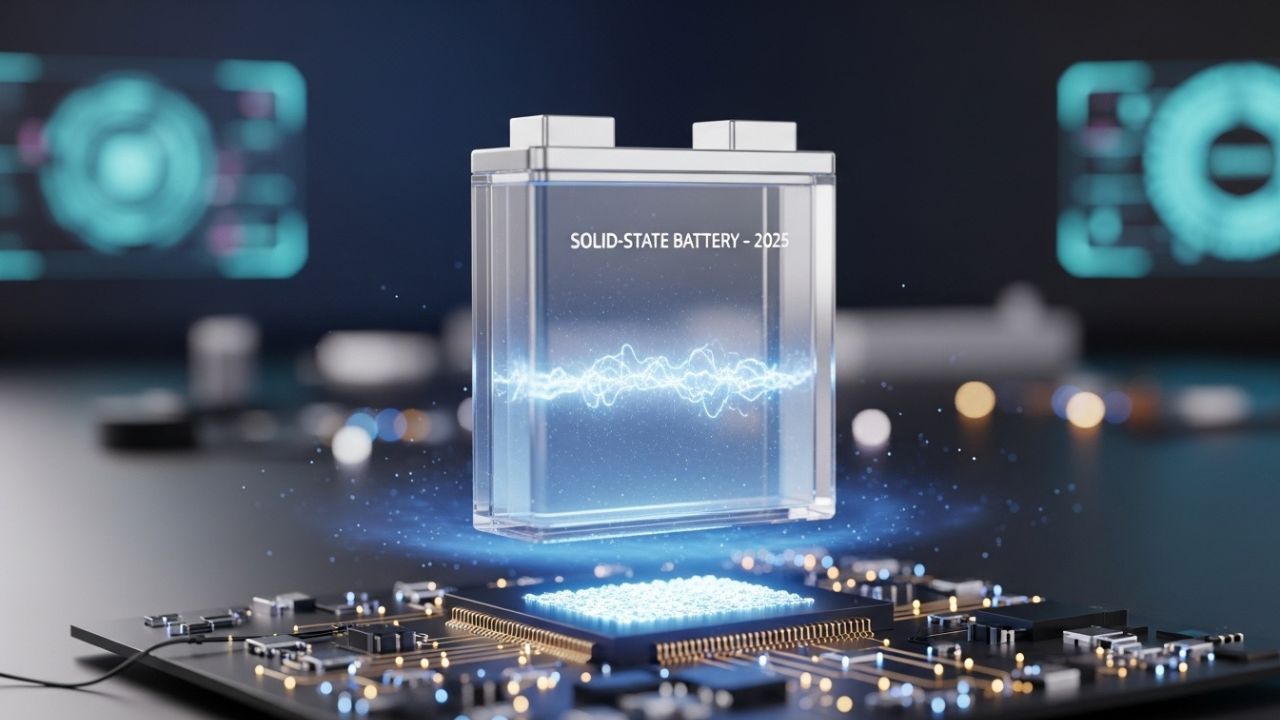Solid-state batteries are hailed as the future of EVs and consumer electronics. In 2025, are they finally ready for mass production? Explore the latest breakthroughs, challenges, and real-world applications.
For more than a decade, solid-state batteries (SSBs) have been labeled the “holy grail” of energy storage. Promising higher energy density, faster charging, and improved safety compared to today’s lithium-ion batteries, they have been at the center of research labs, startup pitches, and auto industry roadmaps.
As 2025 unfolds, the question on everyone’s mind is simple: Are solid-state batteries finally here, or are we still waiting? This article explores the state of solid-state technology, real-world progress by automakers and tech companies, challenges to commercialization, and what consumers can expect in the near future.
What Are Solid-State Batteries?
Traditional lithium-ion batteries use a liquid electrolyte to shuttle ions between the anode and cathode. Solid-state batteries replace that liquid with a solid electrolyte, which can be ceramic, glass, or a polymer material.
Key advantages include:
- Higher energy density → More range for electric vehicles.
- Faster charging times → Potential for sub-15-minute full charges.
- Improved safety → Solid electrolytes reduce the risk of thermal runaway and fires.
- Longer lifespan → Less degradation compared to liquid electrolyte cells.
Why the Hype Around 2025?
2025 has long been cited as a target year by major automakers and battery companies for the introduction of commercial solid-state cells. Toyota, Samsung, QuantumScape, and Solid Power have all suggested that mid-2020s would mark the beginning of pilot production and early deployment.
EV buyers and tech enthusiasts are watching closely because solid-state batteries could reshape the competitive landscape by making electric cars lighter, safer, and capable of much longer ranges.
Current Progress in 2025
1. Toyota’s Big Push
Toyota has been one of the most vocal companies on solid-state technology. The company announced pilot production lines in Japan, with claims of integrating solid-state packs in hybrid models by 2025, before scaling up to full EVs later in the decade.
2. QuantumScape Developments
California-based startup QuantumScape, backed by Volkswagen, reported successful testing of prototype solid-state cells with high energy density and cycle life. However, scaling to mass production remains the primary challenge.
3. Solid Power and BMW Collaboration
Colorado-based Solid Power, partnered with BMW and Ford, has delivered prototype cells for evaluation. BMW expects to test solid-state-powered vehicles on roads by the second half of the 2020s.
4. Consumer Electronics
Some smaller-scale applications, such as wearables and drones, are likely to see solid-state batteries before EVs. Several electronics manufacturers are exploring this for 2025 launches, since smaller devices require fewer cells and simplify manufacturing.
Read Also: Tesla Phone 2025? Starlink’s Spectrum Deal Explained — and Why There’s Still No “Model Pi”
Barriers Holding Back Solid-State Batteries
Despite optimism, challenges remain:
- Manufacturing Scale-Up → Producing solid-state batteries at cost parity with lithium-ion remains extremely difficult.
- Durability Under Stress → Solid electrolytes can develop dendrites (tiny lithium filaments) that reduce performance and compromise safety.
- Cost → Current prototypes are significantly more expensive than traditional lithium-ion cells.
- Temperature Sensitivity → Many designs require high operating temperatures to function efficiently.
What This Means for Electric Vehicles
Solid-state batteries are expected to:
- Extend EV ranges beyond 500 miles per charge.
- Enable ultra-fast charging speeds comparable to filling a gas tank.
- Reduce vehicle weight, improving efficiency and performance.
However, in 2025, these benefits are still more promise than reality for mass-market EV buyers. Pilot fleets and limited-production models may appear in the next 1–3 years, but widespread adoption is likely closer to the late 2020s.
Expert Opinions
- Optimists believe we’ll see solid-state in hybrid or premium EVs by 2025–2026, with gradual trickle-down to mainstream cars.
- Skeptics argue that despite progress, real commercialization may take until 2030 or beyond, especially at affordable prices.
Read Also: Mahindra Scorpio-N Petrol MT: Real Highway Mileage Tested and Latest Price Insights
FAQs
Q1: Are solid-state batteries available in EVs in 2025?
Not yet in mass-market cars. Some companies are testing prototypes, but commercial rollout is limited to pilot projects.
Q2: Why are solid-state batteries safer?
They replace flammable liquid electrolytes with stable solid materials, reducing the risk of fires and explosions.
Q3: Will solid-state batteries make EVs cheaper?
Not in the short term. Early production costs are high, but prices could drop once mass manufacturing matures.
Q4: Which companies are leading solid-state research?
Toyota, QuantumScape, Solid Power, Samsung, and LG Energy Solution are among the leaders.
Q5: When can consumers expect to buy EVs with solid-state batteries?
Likely by the late 2020s, though limited versions may appear earlier in high-end or hybrid vehicles.
Conclusion
So, are solid-state batteries finally here in 2025? The answer is: almost, but not quite. The technology is real, and prototypes are proving their worth. But large-scale commercialization is still facing hurdles of cost, durability, and manufacturing complexity.
For now, consumers will continue to see improvements in existing lithium-ion technology — such as faster charging, better range, and enhanced safety — while the industry works toward unlocking the full potential of solid-state power.
The 2025 milestone is significant, but the true revolution may unfold later this decade.
